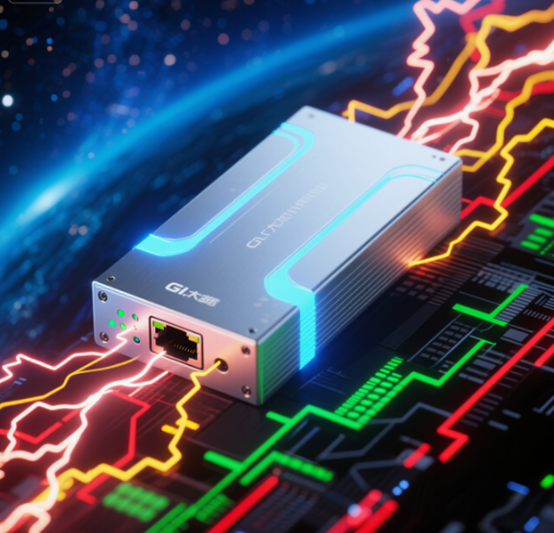G-port bandwidth is significantly different from other forms of bandwidth. The following will detail the differences between G-port bandwidth and other forms of bandwidth and explain the advantages of G-port bandwidth. G-port bandwidth, also known as Gigabit Ethernet, generally refers to a transmission rate of 1Gbps (gigabits per second). In contrast, other forms of bandwidth, such as Fast Ethernet and 10M Ethernet, have lower transmission rates. Here are the differences between G-port bandwidth and other forms of bandwidth:
G-port bandwidth
Rate: The transmission rate of G-port bandwidth is more than 10 times that of other forms of bandwidth. This means that G-port can transmit larger amounts of data and perform operations such as file transfers, video streaming, and cloud services faster. In contrast, the rates of 100M Ethernet and 10M Ethernet are significantly lower and may not meet the needs of modern big data, high-definition video, and high-speed Internet.
Bandwidth capacity: G-port bandwidth has a larger bandwidth capacity and can support more users and device connections. This enables G-port to cope with high-load situations such as multiple users online at the same time, large-scale data transmission, and high concurrent requests. The bandwidth capacity of 100M Ethernet and 10M Ethernet is relatively low, which may cause network congestion and performance degradation.
Technical support and device compatibility: With the development of technology, G-port Ethernet has become the standard of modern networks. Therefore, most modern network devices and switches support G-port interfaces. In contrast, the device compatibility of 100M Ethernet and 10M Ethernet is relatively poor, and additional adapters or device upgrades may be required.

Equipment requirements: The use of G-port bandwidth requires corresponding hardware conditions, including devices such as routers, switches, and network cards. If the network device does not support the G-port interface, then the use of G-port bandwidth becomes infeasible.
Cost: G-port bandwidth is more expensive than other forms of bandwidth. For small businesses or individual users, the cost of purchasing and maintaining G-port bandwidth may be too high. Therefore, with a limited budget, it may be necessary to weigh the balance between cost and performance requirements.
G-port bandwidth has higher transmission rates, larger bandwidth capacity, and wider technical support than other forms of bandwidth. However, the use of G-port bandwidth requires consideration of factors such as device requirements and cost. Choosing the appropriate bandwidth type should be determined based on actual needs and budget.

 DNS Intelligent Resolution
DNS Intelligent Resolution

 Custom Authoritative DNS
Custom Authoritative DNS
 Cloud Computing Services
Cloud Computing Services
 Server Rental
Server Rental
 DDoS protection
DDoS protection
 About DNS.COM
About DNS.COM
 Support
Support
 Contact Us
Contact Us
 AFF
AFF
 API Docs
API Docs

 CN
CN
 EN
EN













